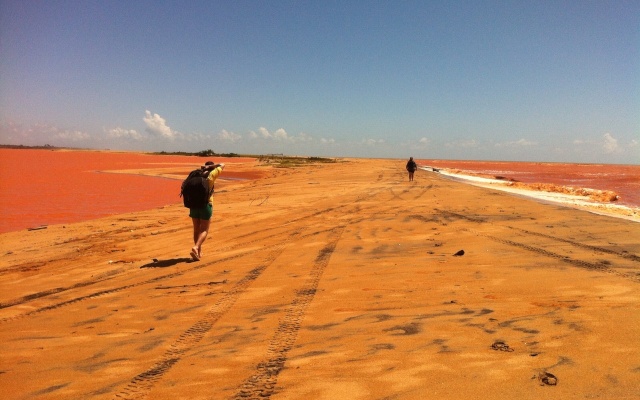Previously published in Portuguese as “Terras remotas,” Piseagrama, no. 10, pp. 112–117, Belo Horizonte 2017.
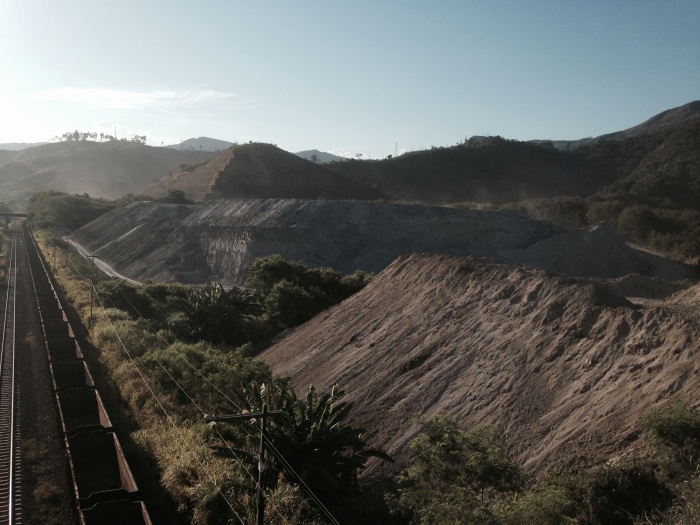
Linia kolejowa idąca wśród gór usypanej ziemi. Zdjęcie: Simone Cortezão. Dzięki uprzejmości artystki.
Fragments of the landscape transported in cranes, trucks, and railway cars to embark on ships that will take them to other lands. Incessant geographical accidents that move under the weight of an economy.
Some years ago, I was returning from Belo Horizonte to Vale do Aço (Steel Valley), in Minas Gerais. About 20 minutes away from my destination, and still sleepy from the nauseating trip, I woke up to a child talking to his mother. At the side of the road, I could already see bulldozers and trucks moving mountains of slag. Speaking quite loudly, as children often do, the 4-year-old boy said in awe: “Look at the cloud factory, mom!”
In fact, it was the steel factory fuming. Under the hot sun, its smoke mixed with the clouds, forming a chemical mass that hung in the sky until some rain built up and would eventually fall. Many times during the year, acid rain poured down from the poisonous mixture. The winds had a hard time dispersing the gases and smoke, especially because winds were somewhat rare in the valley. We lived beside the factory’s leftovers and waste.
The window of my room looked out onto a eucalyptus forest that surrounded the factory. Rumors of privatization started to spread in 1990. Some people were saying that the factory would be relocated. I wondered how in the world they could possibly relocate so many objects, so much land and wood. Today, the forest no longer exists. Not even the mountains exist anymore. Everything has been removed.
In July of 1967, a man named Breno Augusto dos Santos was flying over Pará state, located in the Amazon Forest. During the flight Breno, who was a good observer, saw some gaps, some empty spaces between the trees. They all had one thing in common: a reddish-brown color. There was decidedly some kind of ore appearing on the surface. Immediately, he asked the pilot to land and, with a small pick, he made a discovery that would change the ideas about the country’s development and about the real dimension of its resources.
A YouTube video shows a happy gray-haired man in his 70s. It’s Breno Augusto dos Santos. He is on the top of a hill in an ore clearing. At the bottom of the hill, a helicopter owned by the Vale mining company waits for him. Breno is recording a short institutional video in which he says that this is the sixth time he had visited that spot: the exact same spot where he had discovered the Amazonian ore so many years ago. Nostalgically, he talks about his memories. He is pleased to have helped put Brazil once again on the world mining map. He is also pleased to have valorized the land of the Carajás.
Currently, there are approximately 12,000 km² of mineral concessions in operation in Brazil, and about 40% of the national territory potentially has deposits of metallic minerals. Every year, Brazil produces an average of 139 million tons of iron ore and, out of this total, the country exports 105 million. 70% of Vale’s ore exports are destined for Asia.
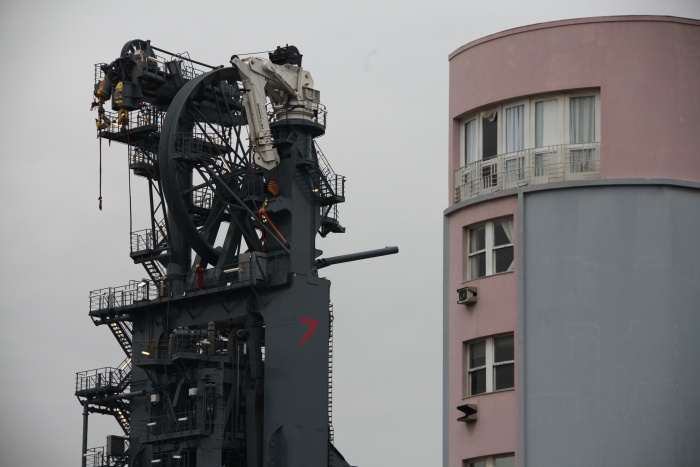
Zdjęcie: Simone Cortezão. Dzięki uprzejmości artystki.
Regarded as a slow and heavy means of transportation, ships seem to be going in the opposite direction of what we understand and imagine as a “dematerialized economy” controlled by computers. They are not only a symbol and constant reminder of the era of discoveries and imperialism – they are still the basis of the current economy, carrying tons of commodities and raw materials, from land to gas, around the oceans.
Brazilian cargos take about 40 days to reach China by sea. Thirty-five ships with an average capacity of 400,000 tons each carry around 56 million tons of ore per year to the Asian country (and this is taking into account only Vale’s numbers). Fragments of our landscape are being carried by ships. The continent is being moved daily, artificially, under the massive weight of an economy.
Huge amounts of earth are being removed from its geological time and place – islands going from one continent to another – like a palimpsest. The mountain is comprised of the fine dusty remains of an earth long gone. The artificial, geographical accident continues; it is unstoppable. The soil-carrying ships sail day and night. Most of our economy, i.e. resources such as ore, coal, oil, gas and water, lie in the many layers of remote lands. With lacerated subsoils, the mineral memory, previously hidden in the deeper layers of earth, can now be seen in open mining pits.
The pits are generally located between mountains or in urban-like territories far from large city centers. The dismantling of mountains leaves sediments everywhere. The landscape is not only made out of dust in suspension that was generated by excavations. A whole “cloud continent” keeps moving as proof of the invisibility of a matter-economy being gradually ruined. According to recent studies by the Brazilian Mining Institute (IBRAM), in 2020, the pace of extraction will be even faster than it is today.
Surrounded by mist and suspended matter, the old boatman says that the mountain was taken away by a large freighter, specifically designed for transporting it to the sea. After 45 days inside the ship, the mountain had shifted color, from the dusty and dry earth that was ripped out of the landscape to a mixture of suspended matter: the white haze of the sea, and also a kind of earthy gray fog.
Jose, an 80-year-old worker at the Port of Tubarão, describes a ship trip destined for China. He does not remember exactly when it happened, but his memories of the vessel are vivid, as well as those of the maritime landscape, the infinite landless horizon, and the transportation of a mountain. Previously, the earthy mountain had traveled great distances on land inside trucks, cranes, ducts, and trains. It took years before it could reach the sea and the ship.
As the freighter drifted away little by little, it was possible to see the mountain being carried by it. When the vessel finally disappeared into the sea, it became a floating, moving island.
The mountain approaches the new continent, the ship arrives in China, and the memory is of the port instructions for the ship to dock. Jose shows other smaller mountains being taken away, but says that the largest one is already gone. Anyone can see the crossing of the cargo ships carrying land in the distance. Nowadays, a whole continent is sailing. In exchange for the mountains, the old boatman says that the ships return with many goods.
In the dismantling of mountains, navigation is the final step. Getting to the port shows how a landscape can actually move. The imaginary dichotomy between land and water determines the transition between these two moments of production and the purposes of an irrational economic logic.
The excavator lies at the bottom of the great hole, stranded and frozen in time under a crust of dust, smelling of iron. We broke through that territory, we saw all sorts of imaginary creatures and, as any child would, we invented radical uses for the ten-meter-wide pit.
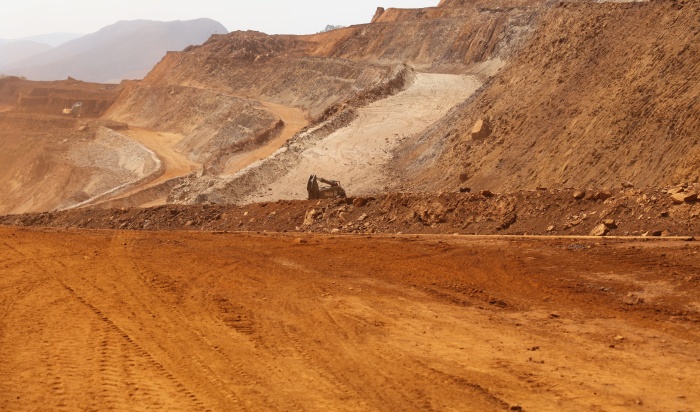
Kopalnia odkrywkowa. Zdjęcie: Simone Cortezão. Dzięki uprzejmości artystki.
The floor of our house was light blue with white patches of about five-by-eight centimeters, a typical floor from the 1960s. There were only two rooms and the street passed right beside them. In the living room, lay a small yellow armchair and a dark green couch with animal and jungle cushions. The house was divided in half by a large crack, which crossed exactly between the two rooms. At night, from my bed, I could see the crack on the floor. On rainy days, I had constant nightmares about half the house collapsing and tumbling into the great hole.
The neighborhood was one of those forgotten places on the outskirts of the city – a place where the grass advances and nature borders it. Right there, unmoved, the excavator was the ideal image of a timely pause in the face of an imminent accident. When disaster strikes, not even personal objects can be salvaged. The beige uniform left inside the bulldozer fused with the dust in its interior.
With a made-up map in hand, the hole was our favorite exploring site. The banana trees, manioc, and sweet potatoes were the only species that resisted the eroded soil, trying hard, though with thin roots, to hold the earth and prevent an inevitable collapse. In the deeper layers, the pink color of the soil glowed like glitter, so we sometimes spread the mud on our bodies. In those moments, the “imminent disaster” would fall asleep. We were exactly beneath the house, and we could see its foundation and the light blue floor with white patches from there.
Under the unsettling ocean skies, I now think day and night about that crack and the slow invasion of earth into that house twenty-five years ago. Along with these thoughts comes the imminence of a landslide that haunts my dreams to this day.
Lapses are usually the final stage of years of eucalyptus plantation, ore extraction, and beneficiation. Ponds made out of waste, vast abandoned areas, obsolete structures, the end of a fence where there may still be some gold, anything that remains: all leftovers. Open and inactive intervals of the economy. There is still another lapse in these ruins: the bare earth and the weeds – the only plants that grow spontaneously in these places, the ultimate markers of dysfunctionality. As instances of fissure, these lapses provide the opportunity to contemplate and think everything over. Once more.
At all times, the urban produces these hangover zones, forbidden places where wrecks from elsewhere abound, as well as millions of stories and overlapping subjects. These places are dumps, mountains of slag, deactivated factories, plantations of eucalyptus, pipes through which useless leftovers make their way. In the end, the hangover is the backflow, the place where the waste and the refugees of cities live. These zones are the input, the vicious circle of disasters, like places of high intensity and low frequency, with extremely complicated logics, that deposit powerful pulses of stale energy.
The previously fixed land is being displaced by machinery: excavators, trucks, wagons, ducts, cranes, pipelines and, finally, intercontinental freighters. Part of the mountain gets lost and circulates in the form of dust. The other part becomes mud and is gathered in a pond, which when dry turns to a desert. When it flows like mud, it is a ticking time bomb, waiting to explode.
A cloud of suspended dust sits above and around the pit. Sediments of the landscape are like ghosts. Aboard the ship, the mountain is already being transported, but there is still a deeper subsoil, and the backhoes are still there, silent.
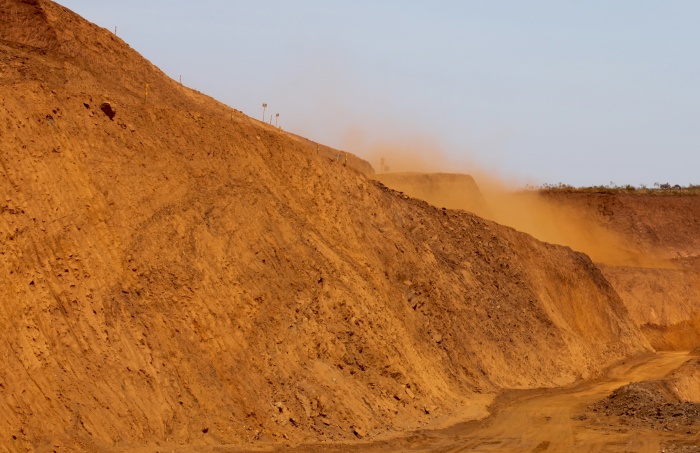
Kopalnia odkrywkowa i chmury pyłu unoszące się nad nią. Zdjęcie: Simone Cortezão. Dzięki uprzejmości artystki
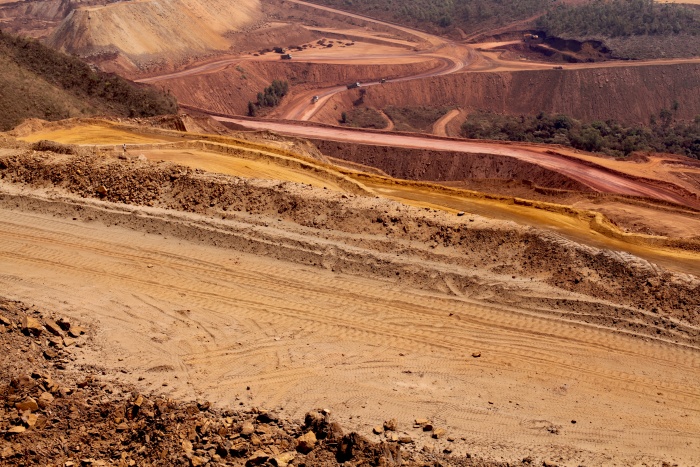
Kopalnia odkrywkowa i chmury pyłu unoszące się nad nią. Zdjęcie: Simone Cortezão. Dzięki uprzejmości artystki
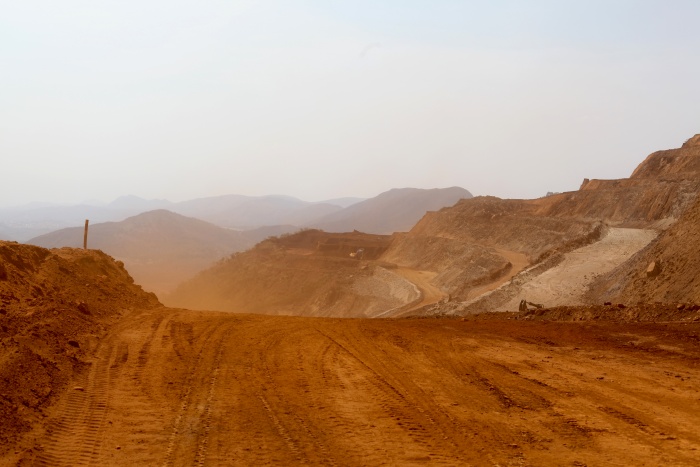
Kopalnia odkrywkowa i chmury pyłu unoszące się nad nią. Zdjęcie: Simone Cortezão. Dzięki uprzejmości artystki
The smell of sulfur has now surfaced. It came from the mud, retained for years. It came from within a mountain that no longer exists. Another mining accident just happened. In social media, in newspapers, in the city where the river meets the sea, the waiting is for the mud that will arrive on Saturday and hit the ocean the next day. In other places, where the mud has settled, the water has turned orange-brown. As the muddy water begins to evaporate under the intense heat, it releases a smoldering scent that now travels with the wind.
In that part of the city where fences fail and houses flow in pieces, the mud runs from the great pipe. A crust of dust attaches itself to the walls and grimy facades as the dense landscape of the light centers grow farther away. This confusing and immense place is the hangover zone, a no-man’s land that is no longer above the ground. Like some sort of naked and abandoned neighborhood, it is chaotic.
At the end of the fence, there are children with little baskets and shovels, and adults accompanying them. From the clay, scintillating fragments come out of a huge duct at least one meter in diameter. After the tube ends, there is a trail of multicolored mud, and, hidden amongst it, a little bit of gold. Sunk in the lapse of cartography (the result of a peculiar type of exclusion where the surplus of the collapsed landscape stinks of a burning and nauseating acid), there appears what the Yanomami people refer to as “poisons of the earth” and the economists call “economic resources.”
There were no reporters on the ground, which was like quicksand for kilometers. In the turbulent and rapid images taken by helicopters, the scale of the disaster gradually became apparent: the giant mining trucks appeared like little white dots in the mud.
2015 was one of those years when everything seemed to happen. It was close to 5:00 p.m., and the scorching 40-degree heat of many days in a row without rain was merciless. The TV showed images of the mining town of Bento Rodrigues buried by the mud. That afternoon, an avalanche of mud was still occupying every corner of the valley along its way. With the sun shining strong in the cloudless sky, the images seemed to come out of some dystopian movie. The terrible setting that Mad Max presents in its initial off-screen narration – describing contaminated rivers, contaminated bones, lack of water – merges perfectly with the images of the mountain running down, rotten, in that afternoon.
A few hours later, the seismic monitoring agency announces a seismic shock at the site. It is not known whether the small daily tremors of the constant implosions disrupted the tailing ponds, or if it was an actual more remote earthquake, or if the company manipulated information, or if it was simply the weight of waste 924 meters deep – about 60 million cubic meters – that had finally blasted through the dam. Whatever the technical reason, no one can deny the impressive audacity of the mining activity in the face of the geological forces. Later that evening, images of a viscous mud mixed with arsenic, zinc, and heavy metals were all over the newspapers, TVs, and social media. Soon, by its sheer quantity, it would reach other cities and the Doce River, swallowing everything in its path.
Every day, a different town braced for the mud’s arrival. On Monday, in a city close to the sea called Baixo-Guandu, a crowd gathered. Those people could have been waiting to see a beautiful sunset, but were instead standing on a bridge, waiting for the mud. As some sort of spectacle, the melted mountain arrived after traveling about 500 kilometers along the river.
The dimension of nature overflows the urban scale. From a distance, the tailing ponds look like paintings. What seems necessarily ugly is sometimes beautiful or even scary. However, its real dimension can only be perceived in the event of an accident. When the geological layer is left in the open air, it looks like ordinary mud or dust, but it also circulates every day between houses, like the dense warm air of dry weather.
Deforested urban contexts such as scientific institutions, free economic zones, eucalyptus plantations, abandoned buildings, post-industrial territories, ruins, urban voids, mined areas, slag areas, and agroindustry are all part of hangover zones in many neighborhoods. Peripheries are no longer borders. They are located between things, as a consequence of the lack of definition regarding political and environmental invisibilities.
About a week after the dam ruptured, on a Thursday, when the mud was almost dry, we decided to travel to the city of Bento Rodrigues. We left early, already aware that the whole region was closed, and that entrance would be forbidden. We went anyway.
“Giant armadillo” is what David Kopenawa calls the white man, who, despite already having enough products and merchandise, continues to dig the earth. Kopenawa says that “when gold is still stone, it is a living being. It only dies when melted in fire, when its blood evaporates in the great pans of the factories of the whites.”
As announced in the news, the accident happened in Mariana, but, like in many smaller cities, its extension reaches far beyond the urban perimeter. Just 20 kilometers away, by a dirt road, we got to the first district, called Camargos. Along the way, along the brown-purple road, the earth shone bright. It was easy to figure out that a lot of ore was in the first layer. The road was remote and without cars, there were only a few trucks. There was also the city’s dump. Camargos is a remote village, and after the accident it was pretty much a ghost town: in that morning, there were only five residents. They warned us again that the main area affected by the mud was blocked, but we continued anyway.
Isolated in the mud and still far from Bento Rodrigues, we took a slightly longer route in an attempt to enter the site of the accident. After about 60 kilometers inside the car, I understood why the 60 million cubic meters of tailings could still be unimportant for many. Displaced and far from the urban life, the lunar appearance of the landscape was as remote as one can imagine. The small town of Bento Rodrigues only exists because of the mud that escaped the hangover zone, but the gigantic river of mud would finally feel real once it brought larger cities into collapse.
We were not allowed to enter the area of the accident – a forbidden, closed, surrounded and monitored area. During the return trip, at the very first turn, we found two residents who were walking, also on their way back, on that dirt road. They told us that they would try to find another path to enter.
The afternoon was hot and the air was dry. It took only seconds for the skin to burn under the sun. The road was long. In a distant corner that might have seemed quiet, trucks and pickups rolled around.
From the top of the hill, Bento Rodrigues looked like a war zone, or, to be more precise, like an immediate ruin of the future. All the images seen for days on the TV were now very close, with more depth and especially (even though no media outlet cared to mention) more stench. There was a foul odor of death and rottenness in every corner of that crumbling and run-down place. Just as every food, animal, and buried human body was already decomposing, so was the chemical sludge that rotted for so long behind the dam. It was now time for it to transform.
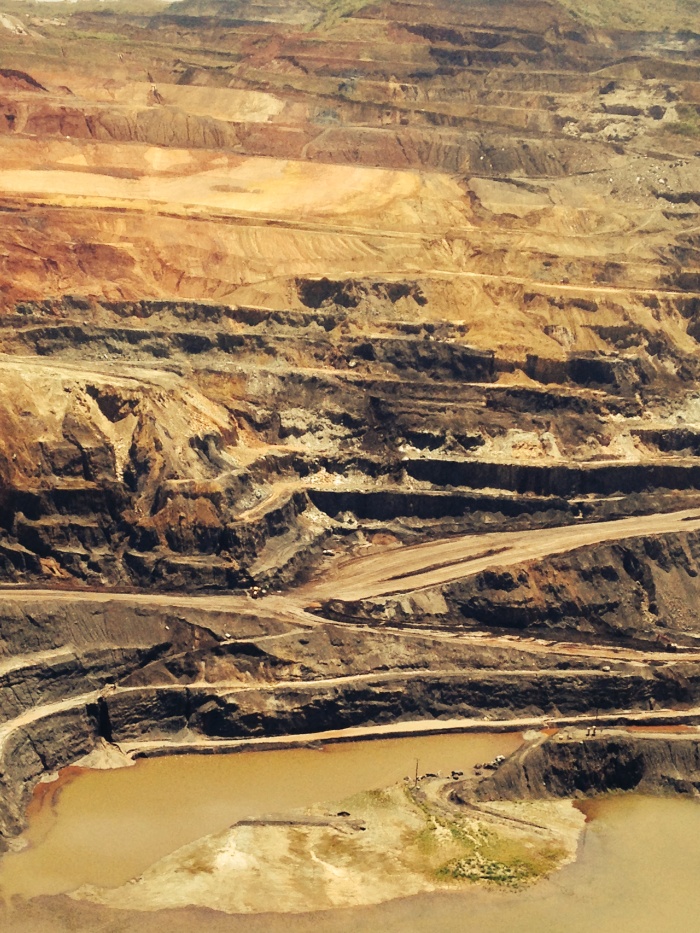
Kopalnia odkrywkowa. Zdjęcie: Simone Cortezão. Dzięki uprzejmości artystki
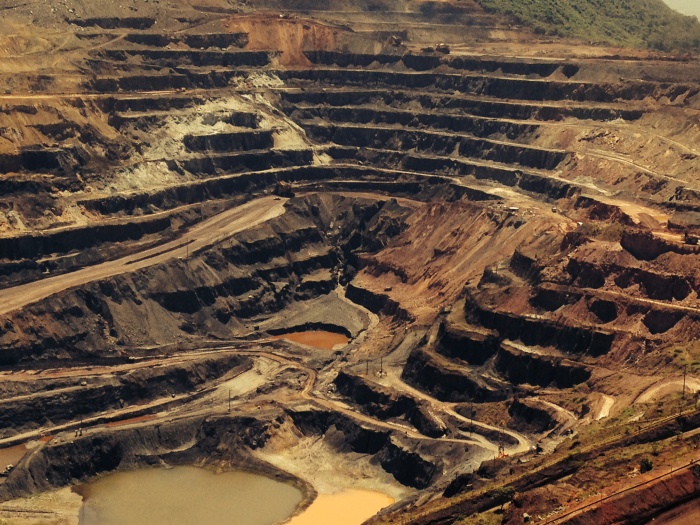
Kopalnia odkrywkowa. Zdjęcie: Simone Cortezão. Dzięki uprzejmości artystki
Translated from the Portuguese by Guilherme Lessa
BIO
Simone Cortezão is a visual artist and filmmaker. In 2010, she completed her Master’s degree from the School of Fine Arts, UFMG (Federal University of Minas Gerais) in Visual Arts. She received her PhD from the School of Fine Arts, UERJ (the State University of Rio de Janeiro), in 2017. Simone teaches and studies urban theories, visual arts, cinema, and other areas of similar interest. Simone has exhibited films in many national and international festivals such as: Visions du Réel (2017), The New Latin American Cinema Festival – Havana, Cuba (2009/2013); International Festival of Cinema of Viña del Mar - Chile (2013); Tiradentes Film Festival (2009/2013); Rio de Janeiro International Short Film Festival; Gramado Film Festival (2007); FestCurtasBH (2015), among others.
Filmography - (direction, script, and production) Navios de Terra, Land Vessels – 70 min (2017); Subsolos, Underground – 30 min (2015); Vago Vizinho, Vacant Neighborhood – 20 min. (2013) co-director Ramilson Noronha;Abismo Circular, Circular Abyss –5 min (2009); Até que chegue o fresco do dia, Until the cool of the day comes – 17 min (2008).
* Cover photo: two wayfarers on the road through red and orange mud. Photo: Ana Moravi. Courtesy of the artist.



